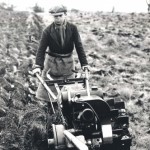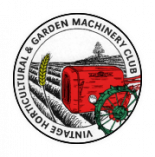Forum Replies Created
-
AuthorPosts
-
August 22, 2016 at 1:31 pm #22037
 trusty220Keymaster
trusty220KeymasterA “Very Well Done” to all who supported this brilliant event last weekend. I am told it was the biggest one yet, with queues stretching back 8 miles at mid-day on the Sunday so it is certainly proving to be one of the up-and-coming events for the future. It’s difficult to see how to improve it further but I’m sure the enthusiastic imaginations of Kevin and his many helpers will manage it somehow!
I took a few photo’s on the Sunday morning; they aren’t all horticultural exhibits but they will give those of you who haven’t been a taste of the variety that is on display.
Again, a big “Thank you” to all who made my weekend a very enjoyable trip out, despite the embarrassment of being presented with a birthday cake by Ivan and Sandra on Saturday (and very nice cake it was too!)!
August 17, 2016 at 3:48 pm #21953 trusty220Keymaster
trusty220KeymasterIt does go to show how you can improve a display of machinery by using a little imagination. Charlie’s right, how would these have looked if they had been arranged in a long line? Not very eye-catching, I suspect, but by using them to draw the spectator in to the written material in the gazebo Kevin has made the most of his display.
Well done, Kevin, see you at Tractorfest this weekend.
July 29, 2016 at 9:09 am #21693 trusty220Keymaster
trusty220KeymasterI entirely agree with you, Neil. I have rebuilt a few of these in my time and they couldn’t be simpler, an ideal situation to be in with “our” machinery.
I have a complete directory of all Wico types and so if anyone needs to know specs., etc. then drop me a line with the spec. number.
July 20, 2016 at 8:05 am #21533 trusty220Keymaster
trusty220KeymasterA dynastart is definitely the way to go as it turns the engine over with a V-belt and also charges up the battery at the same time. An alternative source for it could be an old Ransomes Motor Triple with a petrol MAG engine, although they are getting harder to find these days.
July 2, 2016 at 8:32 am #21321 trusty220Keymaster
trusty220KeymasterNo, but I don’t think I’d try saying it after a few beers! Quite an interesting series on the Travel channel and they do turn up plenty of “our” stuff whilst having a rummage. It is also useful to see how they go about repairing/restoring/preserving various items that they buy.
Highly recommended viewing if you haven’t seen it.
June 28, 2016 at 6:25 pm #21294 trusty220Keymaster
trusty220KeymasterDon’t forget the Cushman vehicles used a two cylinder air cooled flat twin as well. It is sometimes called the OMC engine and normally has a distributor sticking out of the top with the points in- much better than trying to get the flywheel off!
June 27, 2016 at 3:44 pm #21277 trusty220Keymaster
trusty220KeymasterSteve can bring the booze and the pole dancers!
June 27, 2016 at 3:39 pm #21276 trusty220Keymaster
trusty220KeymasterIt’s normally a sign of an over-rich mixture. Is the main jet adjustable?
June 15, 2016 at 1:24 pm #21193 trusty220Keymaster
trusty220KeymasterIt looks like a levelling tool that is normally used for end of season repairs to cricket creases, very similar to the Sisis TruLute. If anything it is a little smaller than the Sisis tool, but would achieve the same result.
As you are probably aware, during the season the ends of the cricket wickets tend to wear away and by the end of the season they normally have quite a pronounced dip behind the crease at each end, so what groundsmen do to build up the surface again to the required level is to spread a mixture of soil and clay (normally Banbury Loam) onto the worn areas, then by shuffling the TruLute backwards and forwards it will work the new soil down and level at the same time. They then sow this with grass seed and leave it over winter.
Cricket is the only game where the groundsman tries his hardest to kill the grass when it should be growing, then tries to grow it when it should be dormant. If you think your job is hard, spare a thought for the cricket groundsman!
June 13, 2016 at 7:41 pm #21160 trusty220Keymaster
trusty220KeymasterDon’t forget that once it’s registered you are then on the DVLA’s radar and they monitor whether you have insured the vehicle, got it MOT’d, etc. It’s easier to SORN the vehicle if you aren’t using it on the road to stop them sending you reminders/fines, but then that begs the question why you need it registered in the first place. They will also ask if the vehicle is adapted for road use, which is not an easy thing to do.
I suppose what I’m trying to say is that it is that complicated to do these days it often isn’t worth the effort.
May 31, 2016 at 10:53 am #21040 trusty220Keymaster
trusty220KeymasterThey probably bought the mower parts from Wolseley which was also a Birmingham based company. They certainly look the same in the photo’s.
May 30, 2016 at 9:46 am #21033 trusty220Keymaster
trusty220KeymasterThe head gaskets were prone to leakage on these engines on a regular basis when they are worked hard. The only way to get a useful life out of them was to torque them down as per the diagram in the manual. There was an amendment to the manual that was put out in a Ransomes Service Bulletin quite early on, and that was to increase the head bolt torque to 40 lb/ft and open up the air cowling on the left hand side just above the clutch to increase the airflow.
Good luck with it.
May 28, 2016 at 6:00 pm #20987 trusty220Keymaster
trusty220KeymasterThese engines had two types of carburettors fitted. When I was working on them full time they were simply known as “Old Type” and “New Type”; it does rather sound like you have a blockage of the slow running jet, but if you say you’ve cleaned it then I don’t doubt you.
I’m just using a bit of lateral thinking here- have you set the points to the right gap, and is the ignition timing set correctly (by turning the distributor)? If the points gap is too small the first sign is that the engine won’t run on tick-over. I’m a little puzzled by the engine running on as well because they used to shut down quite quickly when the throttle is released; have you tried re-setting the governor?
The video that you posted would suggest that the engine is running at it’s normal working speed, ie full governed speed, and it should not go any faster than that. Have you any idea on the rpm that it’s doing on the video?
May 26, 2016 at 6:23 pm #20963 trusty220Keymaster
trusty220KeymasterI’ve been busy doing other “stuff” lately, so I had to put this little project down for a bit. I think I’m in the first stages of senility as well, because do you think I could find the new little-end bush that I’d bought? I gave up looking in the end and bought a new bush from the local bearing supplier that was the correct internal diameter (22mm), but had an outside diameter of 28mm.
Now, how do we hold a thin walled bush to turn down the outside diameter? My inventive brain came up with a carrier that could be held in the 3-jaw chuck and mounted the bush on a shoulder, then clamped a shouldered washer on the other end with a long bolt through it. This leaves the outside free to turn down and allows the tool to pass over the ends as well, so the whole length of the bush could be turned accurately. The photo’s will give a better idea of how it worked out.
The bush was then turned down to 1.032″ to give an interference fit in the little end hole in the con rod. It was then coaxed in with a stepped washer and a long bolt, then finally four oil holes were drilled in the top. The piston was fitted and the barrel dropped over, using a block of wood to take the weight until the piston rings were well inside the bore. It was then a simple matter of bolting everything up tight again. I will have to re-set the tappet clearances now the spacer gasket is in place, but the piston is now flush with the top of the bore when it’s on TDC so it looks like mission accomplished.
May 23, 2016 at 9:38 am #20948 trusty220Keymaster
trusty220KeymasterThe large lever on the left is to control the forward speed of the machine. The top hole is first cutting speed (ie slowest), with another two holes below it if the grass isn’t too long and you can go faster. The hole at the bottom of the quadrant is for transport speed.
You will not be able to move the lever when the engine is not running, so your best bet is to select neutral on the gear lever between your legs and rev the engine up to spin the drive belts. You should then be able to move the lever into the top hole to start cutting.
The overheating could be caused by using too fast a gear and trying to cut too much at once. Other causes could be that the blades are blunt or that you have the height of cut too low for the conditions.
I will have a look tonight to see if I can find an operator’s manual that I can email you. Could you send me a PM with your email address and I’ll send what I’ve got.
-
AuthorPosts























